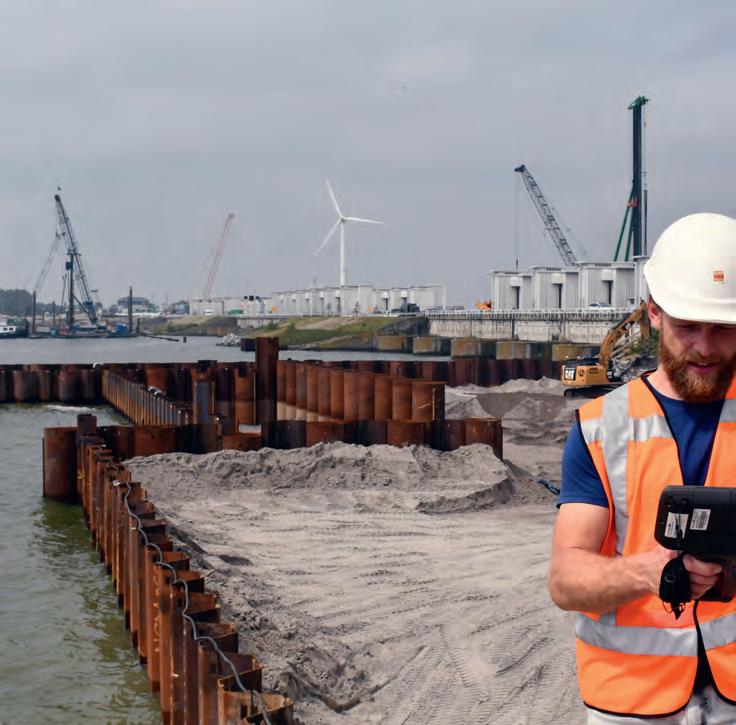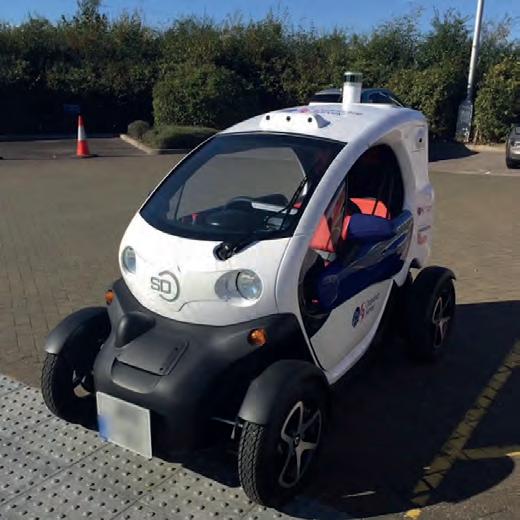
6 minute read
Ordnance Survey partners with OxTS Creating a scalable and reliable mobile mapping and point cloud data collection system
Ordnance Survey, the national mapping agency for Great Britain, was in need of a faster and more cost-effective way to collect georeferenced point cloud data, because the existing method was not sustainable in the long term. The Ordnance Survey team turned to Datron Technology and OxTS to help them develop a convenient, low-cost, ‘off-the-shelf’ mobile mapping system.
Ordnance Survey wanted to build a mobile mapping system that would allow the creation of accurate, georeferenced point cloud data that could be used for feature identification and extraction. The system needed to be cost effective and have the ability to scale nationally.
Who is Ordnance Survey?
Ordnance Survey (OS) creates, stores and distributes detailed location information for Great Britain. The organization records and maintains 500 million geospatial features in the National Geographic Database of the nation, making over 20,000 updates every day. It has been mapping the nation since 1791 and has continued to evolve to meet its needs. Innovation is at the heart of everything Ordnance Survey does, and the OS experts are at the cutting edge of collecting, maintaining and distributing geospatial data.
What was the overall aim of the project?
Ordnance Survey is an experienced user of mobile mapping technology and has used expensive, high-grade technology to create accurate, georeferenced point cloud maps in the past. Whilst this method works, using high-grade, expensive systems for a long-term data collection programme is neither manageable nor sustainable. The OS team required a lower-cost setup that was simple to use and could scale easily. The new system needed to support the reliable creation of accurate georeferenced point clouds that could be used for feature identification and classification.
The challenges
The first challenge Ordnance Survey faced was to build a system that would offer the ability to create an accurate digital representation of the surrounding environment: a 3D point cloud. The features within that point cloud would be subsequently labelled and segmented where necessary. To create the point cloud, Ordnance Survey would have to build a mobile mapping system that could be mounted on a vehicle. It would need to include a number of components such as a Lidar sensor, cameras and an inertial navigation system (INS). Although OS already had the Lidar sensor, an accurate INS was required to provide the position, navigation and timing information needed to create the point cloud.
Another challenge Ordnance Survey needed to overcome was software integration. Previously, the team had been using the Autoware/ROS technology stack alongside a Velodyne VLP-16 Lidar sensor to allow them to simultaneously collect Lidar and GPS-RTK data. However, they quickly realized that they wouldn’t be able to time-synchronize and merge the two sets of data without investing significant amounts of time into software development. This meant that they had to rely on existing ground control points to georeference the point cloud data. Unfortunately, though, that method is unsuitable for building a long-term mobile mapping strategy because it is susceptible to GPS/RTK dropouts.
To overcome these challenges, Ordnance Survey needed a costeffective mobile mapping system that allowed the concurrent collection of accurate location, navigation and Lidar data. The chosen solution also needed to provide OS with a way to quickly and simply combine the two sets of data to create time-synchronized, accurate 3D point clouds.
The solution
The mobile mapping system that Ordnance Survey developed included the following hardware components:
• 1x Velodyne VLP-16 Lidar sensor
• 8x cameras with 360-degree coverage (with redundancy for future sensor fusion)
• 1x OxTS xNAV650 inertial navigation system
• The system was mounted on a Streetdrone Twizy, which is a selfdriving-capable vehicle.
Ordnance Survey was already aware of OxTS through the Autoware and Streetdrone communities. However, it was only when the business requirement emerged that the team looked more closely at OxTS to understand what could be achieved. They also engaged with the local, UK-based channel partner, Datron Technology, to learn more about the OxTS hardware and software portfolio. Datron has been an OxTS partner for many years, and helps OxTS customers make technical and commercial decisions prior to purchase. It also handles first-line post-sales support.
Through its own research, and also by working closely with Datron, Ordnance Survey decided that it could best achieve its goals with a combination of the OxTS xNAV650 INS working in conjunction with OxTS Georeferencer, the company’s Lidar georeferencing software. There were a number of reasons for this decision. Firstly, through the tight coupling of cutting-edge MEMS IMU sensors and surveygrade GNSS receivers, the xNAV650 would give Ordnance Survey the ability to capture highly accurate position, navigation (heading, pitch and roll) and timing measurements necessary for the creation of precise 3D point clouds. Additionally, the hardware is cost effective, plus its small size and low weight make it simple to mount. OxTS Georeferencer also played an important role in the decision. The software has built-in software integrations with many Lidar sensors, including the Velodyne VLP-16 which is already in use at Ordnance Survey.
Products used xNAV650: A high-grade miniature INS from OxTS. It uses survey-grade dual-frequency GNSS receivers and custom MEMS IMU for centimetre-level position accuracy, precise orientation and true heading. It logs the
OxTS: The global leaders in inertial and GNSS since 1998
At OxTS, we’re passionate about inertial navigation and how we can help our customers with our accurate and reliable georeferencing solutions for land, air and marine applications. With over two decades of experience in combining the best of high-precision GNSS receivers and world-class inertial navigation expertise, OxTS products have become the industry standard for automotive testing and are widely used in other industries. Our products provide position, roll, pitch, heading and other measurements of vehicles on land, sea and in the air. Our highly accurate RT3000 series is used by almost all car manufacturers in the world for vehicle dynamics testing, validating advanced driver assistance systems (ADAS) sensors or developing self-driving cars. Our range of combined, compact GNSS/INS systems are used for sensor position and orientation on mobile mapping vehicles or for direct georeferencing of data from airborne surveying. Find out more at www.oxts.com navigation data on internal storage for downloading and viewing post-mission. For many applications, such as corridor mapping and precision agriculture, the xNAV650 provides one of the best price/performance ratios on the market.
OxTS Georeferencer: OXTS’s proprietary Lidar data georeferencing software. It takes the position and navigation measurements from an INS and combines them with the raw data from a wide range of Lidar sensors through a simple ‘drag & drop’ method. An additional boresight calibration tool allows OxTS Georeferencer users to take advantage of a simple Lidar and INS sensor calibration method to eliminate blurring and doublevision from point clouds.
“The collection is very quick. Once the unit is on, the initialization and warm-up time are minimal and we’re collecting data quickly. We boresight every so often, but our setup is quite static. For mobile mapping, this is an extremely costeffective way of gathering data.”
James Clarke, Research Software Engineer, Ordnance Survey
The pre-built integrations with the Velodyne VLP-16 mean that the OS team do not have to spend any time writing code to georeference the Velodyne VLP-16 data. Instead, this work has already been done by OxTS. Therefore, they simply have to collect the Lidar data alongside the navigation data from the xNAV650. Then, using the simple ‘drag & drop‘ method within OxTS Georeferencer, they are able to georeference the Lidar data in a matter of seconds.
The company has also used another feature available within OxTS Georeferencer, the boresight calibration tool, effectively. The coordinate frames of the Lidar sensor and INS must be calibrated precisely. Otherwise, the resulting point cloud can be susceptible to blurring and double vision. However, precise calibration can be very difficult to achieve by eye. Having access to the boresight calibration tool means that the OS team simply need to survey two static ‘targets’ from various angles and distances. Then, at the touch of a button, OxTS Georeferencer is able to calculate the angles to a tenth of a degree. As Ordnance
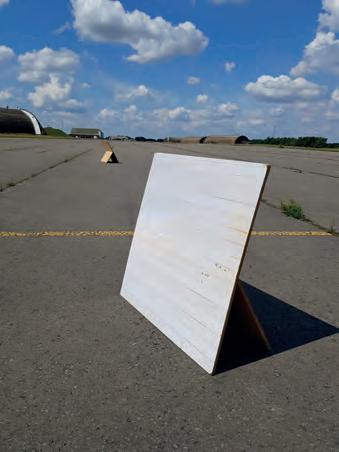
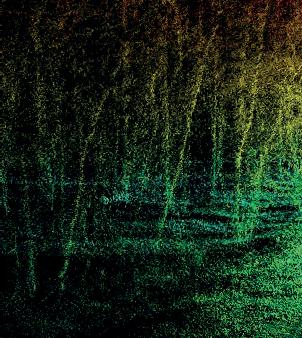
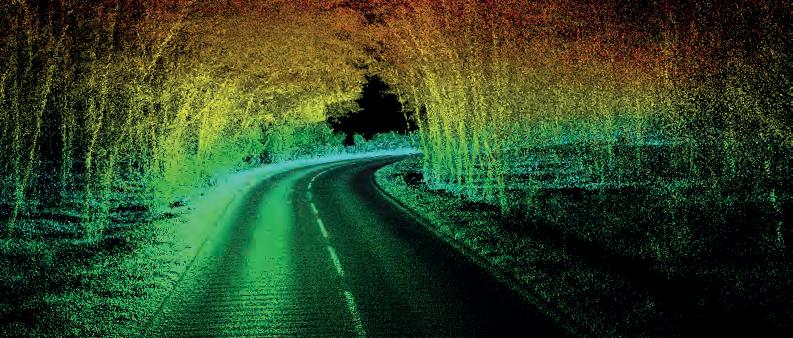
Survey’s set-up is quite static, the boresight calibration only has to be conducted every so often.
Prior to purchase, Ordnance Survey was supported by Datron, who helped the organization to choose the right configuration and aided integration with the existing Lidar sensor.
Results
Although the organization is still early in the data collection and processing phase, the results gained up to now have been very promising. So far, Ordnance Survey has been able to collect and process data from a local town, and compare it to both a groundtruthed aerial point cloud, and a Lidar point cloud collected with a high-end mobile mapping system. Despite the vast difference in price between the two systems, the results have been equally impressive. Arguably, however, the most pleasing aspect of the project so far is how the xNAV650 device and OxTS Georeferencer have impacted Ordnance Survey’s workflow and improved efficiency.
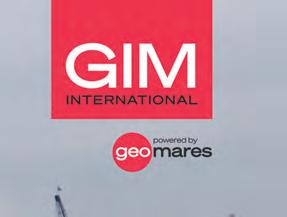

As standard, the xNAV650 includes NAVsuite, a software toolbox that allows users of OxTS INS devices to configure, monitor, analyse and post-process their INS data. Ordnance Survey has found both NAVsuite and OxTS Georeferencer to be simple and straightforward to use, allowing the team to get up and running quickly.
“The biggest change has been the convenience of the off-theshelf nature of the collection, and the processing. This has saved many development hours. The software has also been very intuitive to use.”
James Clarke, Research Software Engineer, Ordnance Survey
Although Ordnance Survey is still early in the adoption phase, the team have been very pleased with both the clarity of the point cloud and also the impact on cost and efficiency. By using a combination of the OxTS xNAV650 INS and OxTS Georeferencer alongside their Velodyne VLP-16 Lidar sensor and Streetdrone Twizy vehicle, they have reduced their mobile mapping costs and improved efficiency while at the same time maintaining the quality of their final product.
